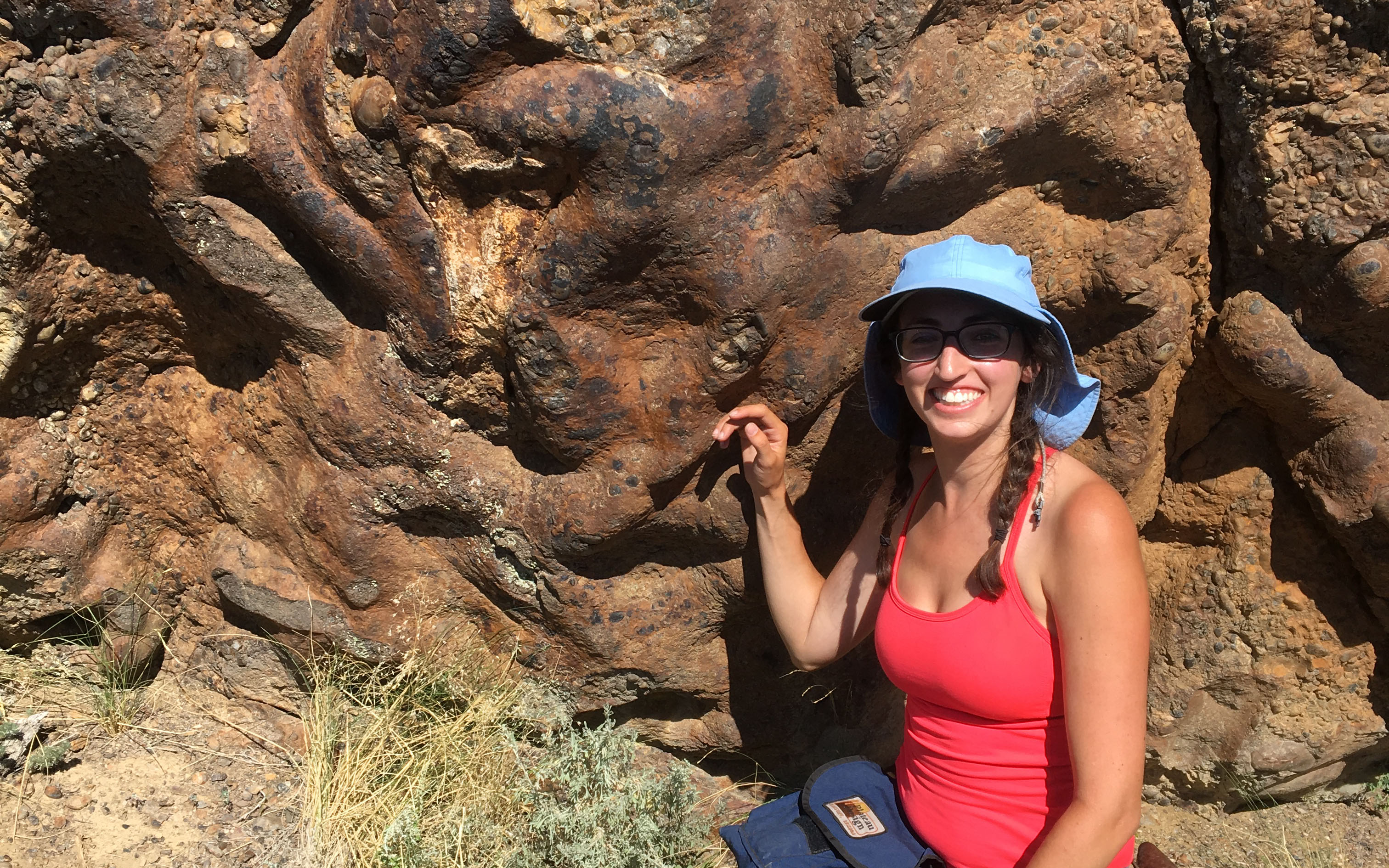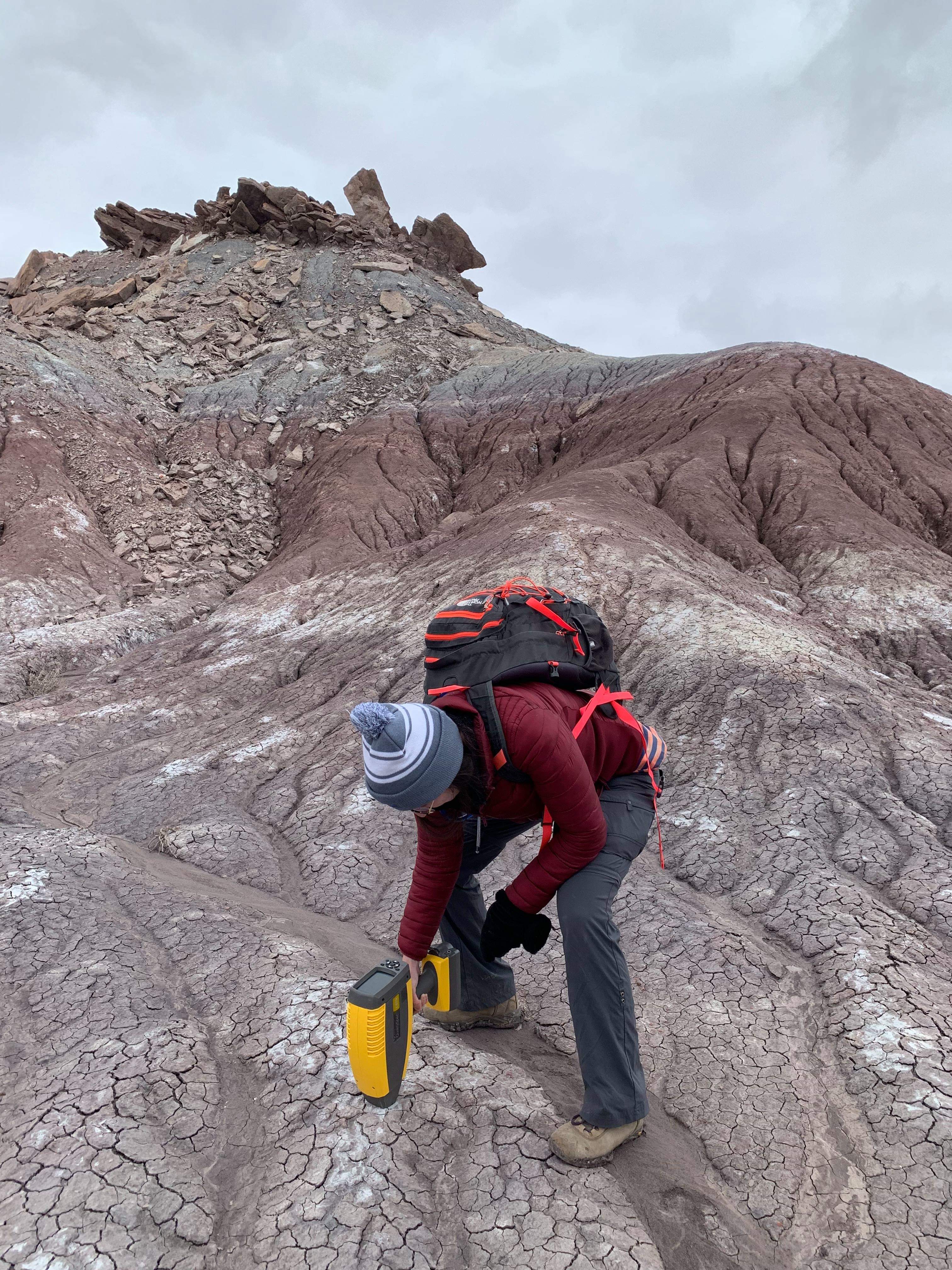May, 2020
Meet Amanda Rudolph, NSF grant recipient

Career paths aren’t always clear or immediate. Amanda Rudolph mapped out hers after enrolling in a geology class on a whim — her first step toward a promising future in planetary science.
A PhD student in Purdue University’s Department of Earth, Atmospheric, and Planetary Sciences, Rudolph recalls taking an introductory geology course that changed her professional outlook. “I had no idea that people could use rocks to understand how environments changed over time,” she says. “Earth science was not emphasized in my earlier education, and no one I knew was involved in any scientific fields, so this was all brand new to me.”
About three weeks in, the class included a lab that required counting craters on the Moon, and Rudolph realized the same principle could be applied to other planetary bodies. “I was hooked,” she says. She also was surprised to learn that the small town where she grew up sits along the Columbia River flood basalts, which are frequently used as a Mars analog.
Rudolph’s commitment to geological science has not gone unnoticed, earning a National Science Foundation Graduate Research Fellowship for her work with the Mars rover. She utilizes orbital data, data from the Mars Science Laboratory (MSL) Curiosity rover, and planetary analog field work to better characterize the type of environment that was present in Gale Crater, Mars when there was flowing water on its surface about 4 billion years ago.
“I aim to help answer the question of how long-lived the lake environment present in Gale Crater persisted and if it could have supported life,” she says. “I use remote sensing data to map unique rock layers present within Mt. Sharp that help track changes in geological environments. In tandem with this remote sensing data, I am analyzing new multispectral imagery from the Curiosity rover currently exploring the surface of Mars.”
Rudolph studies the “Clay-Bearing Unit” to characterize the type of clays present and how they are distributed. Clays are produced from water-rock interactions crucial to understanding what type of environment was present both when these sediments were deposited and later in interactions with water. “I also will be conducting field tests on analog samples using instruments that collect similar datasets as the rover instruments, but in a terrestrial environment,” she says.
The first part of Rudolph’s thesis involves mapping unique layers in Mt. Sharp using orbital data. She also has been analyzing the multispectral imagery from Curiosity and staying active in MSL operations where she’s been trained to be a GeoKOP (“Keeper of the Plan”) for the GeoMin (Geology and Mineralogy) science group for the Curiosity rover.
Rudolph has what she describes as a nontraditional education background. She took a two-and-a-half-year break after high school before earning her AS degree at Seattle Central Community College and a BS in geology from Western Washington University. In 2018, she transferred to Purdue where Briony Horgan, assistant professor of planetary science, serves as her advisor.
Eventually, Rudolph hopes to be part of the team sending humans not just to the Moon or Mars, but other rocky bodies within the solar system. She also plans to be active with outreach events and local community colleges, sharing her passion for planetary science and informing students about different career options available.
Rudolph both understands and respects the academic paths of other nontraditional students, wanting them to see someone who has been in their shoes and become a successful scientist. She says, “I would not be in the position that I am today if people had not been willing to take a chance on a nontraditional student like me.”

Related info
Department of Earth, Atmospheric, and Planetary Sciences

